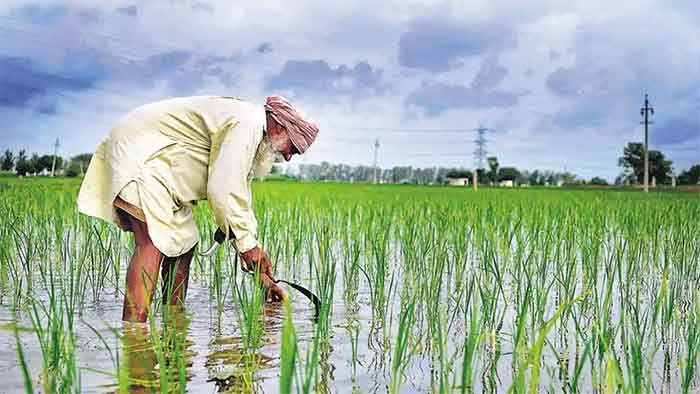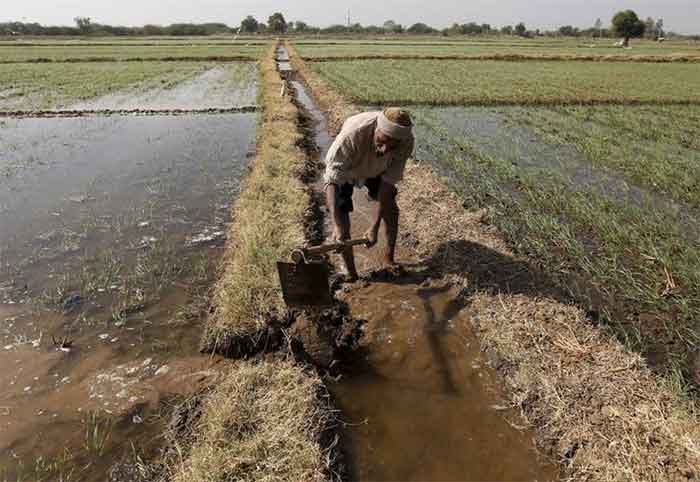
Three new farm Acts were recently introduced in the country. The most important of these, the Farmers’ Produce Trade and Commerce (Promotion and Facilitation) Act, 2020 is aimed at putting an end to the monopoly of the Agriculture Produce Marketing Committee (APMC) mandis. Earlier, under the 1964 APMC Act, all the farmers were required to sell their produce at the Government-regulated mandis. The arhatiya (middlemen) in such cases helped the farmers in selling their crops to private companies or Government agencies. While APMCs will continue to function, farmers will now have a wider choice. But the hazards in the new dispensation is that multinationals may enter the arena , and absence of proper regulation may give them unbridled monopoly. The experiences of such makeovers in several other fields have already shown the ugly side of globalisation.
But one of the powerful ways that growers can serve as their own middlemen is through a livelihood and development strategy that collectivizes the smaller primary producers through locally-managed Farmer Producer Organizations (FPOs) and integrates them into an inclusive value-chain. It is a sustainable, market-based approach in which resources of member farmers (for example, expertise and capital) are pooled to achieve more together than they can alone. It enables members to see their work through an entrepreneurial lens and confers economies of scale, better marketing and distribution, more investible funds and skills, greater bargaining power, access to credit and insurance, sharing of assets and costs, opportunities to upgrade skills and technology, and a safety net in times of distress. The best-known example of an FPO is that of Amul (Gujarat Cooperative Milk Marketing Federation Ltd.) which is a dairy cooperative with over three million producer members.
In this model thousands of scattered small farms are systematically aggregated and provided centralized services around production, post-harvest, and marketing. This helps help reduce transaction costs of the farms for accessing the value chains and makes it easier for small farmers to access inputs, technology, and the market. It also opens opportunities to bring primary processing facilities closer to the farm gates and help producers gather market intelligence and manage the value chain better with digital agriculture tools.
An FPO is a hybrid between a private limited company and a cooperative society. Hence one can see it enjoy the benefits of professional management of a private limited company as well as reap the benefits of a cooperative society. Smallholder farmerproducer groups are a key medium to build scale on account of the confidence, support and buyer/ seller power they provide. They are able to achieve economies of scale through postharvest infrastructure (collection, sorting, grading facilities), establishment of integrated processing units, refrigerated transportation, pre-cooling or cold stores chamber, branding, labeling and packaging, aggregation and transportation, assaying, preconditioning, grading, standardizing and other interventions. The key benefit is the marketing support that links producers to mainstream markets through aggregation of subsistence-level produce into economic lots that can significantly raise the share that peasants get of the money people pay for their food.
The FPOs are owned and governed by shareholder farmers and administered by professional managers. They adopt all the good principles of cooperatives and the efficient business practices of companies and seek to address the inadequacies of the cooperative structure. The best way for these organizations is to leverage their collective strength through a full value chain from the farm to the fork. The underlying principle is similar to that of the full stack approach. This approach makes the sponsor, catalyst or promoter responsible for every part of the experience. In short, it is a whole-farm systems approach. It creates a complementary support ecosystem that boosts farm yields, reduces negative environmental impacts, and increases market access and smallholder farmer incomes. It also provides sustainability interventions including sustainable irrigation products and practices. Moreover, the value chain uses a business approach in order to make it viable.
Apart from the collective strength that group synergy generates, the support structures help in building the capacities of producers to deal with input suppliers, buyers, bankers, technical service providers, development promoting agencies and the Government (for their entitlements), among others. One of its important roles is linking them to reliable and affordable sources of financing in the funding ecosystem to meet their working capital, infrastructure, development and other needs. The collective works to reorient the enabling environment by influencing policies in this direction. The extension services available through the collectives include augmenting farmer capacity through agricultural best practices, agronomic advice, training on use of bio-fertiliser and pest management and modern harvesting techniques, and access to optimal environmental practices.
The success of a collective hinges on many factors ~ the technical support it receives, its institutional base, social and professional composition, land access and cropping patterns of members and adaptation of the model to the local context. Elite farmers are significantly more likely to participate than the less privileged. They often become administrative members and use services substantially more than rank-and-file members. It is, thus, necessary to strengthen democratic processes in these institutions.
Most promoters of the value chain are now successfully using the subsector approach which allows for a focus on specific subsectors and helps in strengthening the ecosystem within which they are able to transition from a comparative to a competitive advantage. The value chain also facilitates capacity-building support and use of modern tools including technology that can help to improve weather forecasting, agricultural processing, soil health monitoring crop identification as well as damage control, and mapping of available water resources.
Some of these collectives are using digital tools to make farming climate-resilient, nutrition sensitive, and inclusive. The farmers are also able to achieve increase in quantity, quality, and consistency of production of crops. For achieving better scale, the value chain needs to steward limited resources and build production systems that natural systems can support over time. This logic embraces the use of soil management regimes that incorporate modest, targeted use of synthetic fertilizer to boost farmer incomes and production without affecting the quality of soil. The technical support is complemented by better water management through rainwater harvesting and recharging of ground water table; introduction of multi-cropping and diverse agro-based activities and use of low-cost and small plot irrigation technologies.
Consolidation of smallholders’ land holdings through cooperatives can also create synergies, especially for the leasing of large equipment or bulk input orders. It also helps in creating cold storage for controlling post-harvest losses. Financing for setting up micro-irrigation facilities and rainwater harvesting modules would help create an infrastructure for sustainable water supply and hence aid farm productivity.
FPOs should also be encouraged to participate in MSP-based procurement operations. eNAM can connect farmers with distant buyers. However, the biggest limitation of eNAM and other similar programmes seems to be that most farmers are not tech-savvy. This is further compounded by low internet penetration and erratic electric supply. We need robust farmer-producer institutions which will have capital and the risk-taking ability to set up processing zones which are critical for preventing losses on account of rotting of foodgrains.
There are several other structural barriers that have to be overcome. First and foremost is the capital constraint. FPOs are initially not able to raise share capital from their member-farmers. They also cannot go to the share market to raise capital unlike the privately-owned food processing companies.
The next is working capital. FPOs have to deal in cash as their member-farmers need the money desperately at harvest time to pay input suppliers and labour, repay crop loans and meet their household expenses. FPOs need higher working capital than the private sector. This is where dairy cooperatives score better since milk is produced and consumed daily and farmers can wait for a few days to get paid.
The third barrier is managerial capability. Many FPOs are struggling on account of lack of handholding support. Many FPOs lack professionalism. FPOs can hire well-paid professionals if they reach a certain scale as Amul and several other, large, successful cooperative dairies have done. But FPOs will have to reach adequate scale to pay appropriate salaries to these professionals. The inclusion of small famers in supply chains requires substantial public investment in agronomic training, irrigation, soil-water conservation, and an overall improvement in the support ecosystem which small famers cannot afford.
While FPOs remain the most trusted allies for farmers, they need to be revitalised by infusing modern design features without diluting their traditional ethos and philosophy. It would require innovative collaborations between state, civil society, and the private sector. In the light of new insights, we need to revisit the model and harness the basics; tweak the traditional design features instead of reinventing the wheel. Experience tells us that continuous training, capacity-building and member awareness programmes can reinforce the key elements and help solidify the relationship between members, field staff, professional managers, financial institutions and directors and build a strong bond that can equip the collectives with the will to fight adversities and exploit opportunities
FPOs can grow as viable, member-controlled, self-sustaining farmer businesses if they constantly work on reshaping the interaction of their members with themselves. The failure of cooperatives is often rooted in the inability of their promoters to understand this interaction. A self-regulatory body designed to protect the interest of FPOs and farmer members can serve a useful purpose.
We need robust farmer-producer institutions which will have capital and the risk-taking ability to set up processing zones which are critical for preventing losses on account of rotting foodgrains. Together with FPOs, farmers can be their own middlemen and India can finally see the dream of farmers’ incomes being doubled being realised.
Moin Qazi is the author of the bestselling book, Village Diary of a Heretic Banker .He has worked in the development finance sector for almost four decades .He can be reached at [email protected]
SIGN UP FOR COUNTERCURRENTS DAILY NEWSLETTER
















































